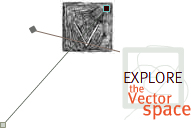
This issue is dedicated to the memory of Roy Rosenzweig, a true pioneer of the digital humanities.
Over the last several years, I have simultaneously been doing two very different kinds of writing about new technology, one examining race and digital media, often in relation to representation and identity, and one engaging the formal and phenomenological structures of new media. I am continually amazed by how easy it is to hold these two types of work apart and have come to believe that the very forms of electronic culture encourage just such a partitioning or modularity, making it hard to sustain connections across fields of knowledge. In our engagement with digital media, we tend to focus at one level or on isolated examples, unable to move between modules or across scales.
Many writing on new technology in the mid 1990s commented on the parallels between the ways of knowing modeled in computer culture and in theories of poststructuralism. Meanwhile, critical race and postcolonial scholars have highlighted how certain tendencies within poststructuralist theory simultaneously respond to and marginalize blackness. This maneuver may at least partially be possible because of a parallel and increasing dispersion of electronic forms across culture, forms which simultaneously enact and shape these new modes of thinking. Certain modes of racial visibility and knowing coincide or dovetail with specific technologies of vision: if the electronic underwrites today's key modes of vision and is a central technology in post-World War II America, these technologized ways of seeing and knowing took shape in a world also struggling with shifting knowledges and representations of race.
In trying to understand how difference matters in the digital era, we should perhaps suspect that the very structures of our information economy (and of the code that underwrites it) look a particular way today precisely because the Civil Rights and other freedom movements happened at mid-century. Both cybernetics and Civil Rights were born in quite real ways of World War II and are caught in tight feedback loops. Certain aspects of modularity, fragmentation, and dispersion that are endemic to digital media also structure the more covert forms of racism and racial representation that categorize post-Civil Rights discourse. I am not so much arguing that one mode is causally related to the other, but, rather, that they both represent a move toward fragmentary or modular ways of knowing and of organizing information, knowledges increasingly prevalent in the later half of the 20th century. From Charles Babbage's 19th century "Difference Engine" to Derrida's 1980s neographism "Différance," the notion of difference has served as a provocative metaphor for thinking about language, culture, politics, technology and identity, while it has simultaneously fueled our thinking about both race and identity.
This issue of Vectors stages multiple examinations of the notion of difference as it plays out in a variety of spheres, discourses and practices, while also privileging race and ethnicity as a central throughline of digital culture, a recurring ghost in our networked machines. Wendy Chun's "Programmed Visions" queries the work of the archive in the 20th century, investigating in particular our continued cultural beliefs that race is somehow knowable and mappable. In creating a kind of anti-archive, this project hints at the many ways in which race and (genetic) code mutually construct each other. In "Nation on the Move," Minoo Moallem deploys the Persian carpet as a powerful analytic for the varied ways that nations travel and differences are consumed. The project toggles across scales, moving fluidly between theoretical paradigm and lived reality and resisting the temptation to fix the meaning of the carpets in only one register or place. Jennifer Terry's "Killer Entertainments" seeks to contextualize a diverse collection of video footage related to the Iraq War, drawing out threads of connected meaning between what might seem to be diverse clips. She asks probing questions about each video, designed to focus our attention on the larger political and social webs of meaning that engender each excerpt's production and circulation.
Projects by David Goldberg and Christian Sandvig also tease out the oft-repressed connections that structure diverse aspects of daily life, in times of both crisis and normalcy. "Blue Velvet's" evocative explorations of the cityscapes of New Orleans both pre- and post-Katrina help us to understand that the seeds of the devastation wrought by Katrina were sown years before the storm touched ground. In mining the subterranean layers of the city's history -- from historic redlining to the budget cuts of the neoliberal era -- the project powerfully connects the dots between culture, politics, economics, and ideology. In "The RED Project," Sandvig and his team extend our conceptions of redlining from real estate or insurance policies to the invisible Wi-Fi networks that enable so much of our privileged connectivity in the present. They have created a prediction machine that refuses the purely indexical and quantitative dreams of so much of technology, instead pushing us to question what operations of power such mimetic fantasies paper over or conceal.
Mark Kann likewise questions a certain faith in predictability or rationality. In "Deliberative Democracy and Difference," he argues that theories of deliberative democracy must suppress certain variables or predispositions in order to model a world of rational discourse and democracy and instead offers a simulated glimpse into how such theories are likely to fall short. The final project of this issue, "ThoughtMesh," continues our goal of including in each issue lively "tools to think with," projects that serves as springboards to collaboration or interaction rather than as mostly "finished" pieces. As with "The RED Project," the team behind ThoughtMesh invites you to push beyond the surface of your screen and the modular nature of much of digital culture toward larger enmeshed meanings.


 Difference Issue Projects
Difference Issue Projects
